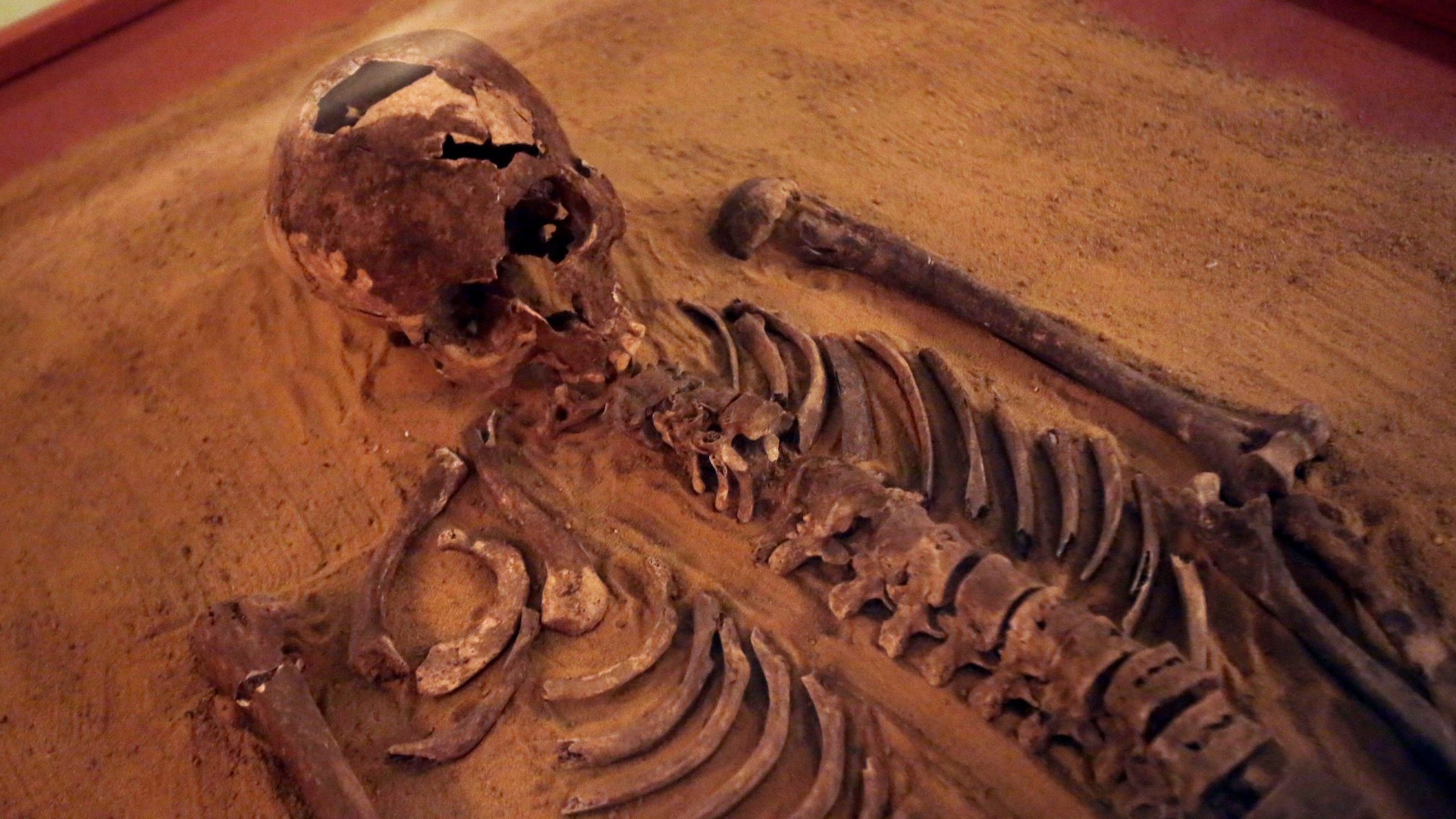From dazzling Anglo-Saxon treasure to Earth’s constellation of “minimoons,” it’s been a busy week for science news. While our own planet has delivered its fair share of surprising stories, our cosmic neighbor has stolen show with its latest close-ups.
In the last few months, NASA’s Martian rovers have sent back images of giant “kidney bean”-like structures, “ripples” left by ancient water and rocks that look like spider eggs. Now, high-resolution satellite imagery has revealed wave-like soil patterns on the Martian surface that closely resemble those found on our own planet.
On Earth, these ripples tend to form on the slopes of cold mountains, where soils freeze and thaw throughout the year. It is unclear whether the same process produced these patterns on Mars, but researchers hope that studying them will offer valuable insights into the planet’s climate history, as well as aiding in our search for signs of life on Mars.
Mysterious hilltop discovery
High on a volcanic hill in western Hungary, archaeologists have uncovered a rare stash of hundreds of ancient artifacts, including jewelry, military decorations and weapons, dating from the Late Bronze Age (1450 to 800 B.C.) to the Early Iron Age (800 to 450 B.C.).
Today, the area around Somló is primarily known for its wine production. However, in the late 19th century local farmers and wine producers began unearthing ancient artifacts, leading researchers to dive deeper into the hilltop’s buried secrets.
The findings indicate that the hilltop might once have been a seat of power among the communities that once lived there.
Discover more archaeology news
—Secret of ancient Maya blue pigment revealed from cracks and clues on a dozen bowls from Chichén Itzá
—Archaeologists unearth tree-lined walkway that led to ancient Egyptian fortress in Sinai Desert
—Metal detectorists unearth dazzling Anglo-Saxon gold-and-garnet raven head and ring: ‘It’s unbelievable — I’m a bit emotional’
Life’s little mysteries

When archaeologists find a human skeleton, they are able to estimate whether that person was male or female with 95% accuracy. But with most of the distinguishing soft tissue decomposed, how do researchers actually go about sexing these ancient skeletons?
No single method is 100% accurate, but archaeologists have several tricks up their sleeves when it comes to distinguishing differences between sexes, from DNA analysis to measuring their bones.
‘Free-range’ atoms
For the first time ever, scientists have observed free-floating atoms interacting in space, confirming some of the most basic principles of quantum mechanics.
Single atoms are notoriously difficult to study due to their quantum behaviors, such as their ability to behave as a single particle and a wave at the same time. However, physicists at MIT have discovered that free-floating atoms can be observed in “atom clouds” with the help of lasers.
“It’s like seeing a cloud in the sky, but not the individual water molecules that make up the cloud,” Martin Zwierlein, a physicist at MIT and co-author of the new research, said in a statement.
The discovery enables scientists to capture images of these “free-range” atoms as they float about in space, which they hope will aid future investigations into other mysterious quantum mechanical phenomena.
Discover more physics news
—World’s first silicon-based quantum computer is small enough to plug into a regular power socket
—Physicists create groundbreaking atomic clock that’s off by less than 1 second every 100 million years
—Physicists create ‘black hole bomb’ for first time on Earth, validating decades-old theory
Also in science news this week
—Rare genetic mutation lets some people thrive on just 4 hours of shut-eye
—Climate change made April’s catastrophic floods worse, report finds
—Invasive Asian needle ants are surging in US Southeast — and their bite can trigger anaphylaxis
—T. rex may have evolved in North America after all, scientists say
Science Spotlight
Historical depictions of women often focus on their roles as mothers and homemakers — however, new research increasingly suggests that in Viking Scandinavia, some women were anything but meek and mild.
Numerous excavations have revealed female skeletons buried with lethal weapons. “Women can be as strong, as skilled, as fast as men,” Leszek Gardeła, an archaeologist at Ludwig Maximilian University of Munich and author of “Women and Weapons in the Viking World: Amazons of the North” (Casemate, 2021), told Live Science. “There is nothing in the biology there that would prevent them from being warriors.”
However, the poor preservation of Scandinavian graves and lack of historical texts make it very difficult to confirm the roles of these women in Viking society, leaving the subject of women warriors hotly debated among archaeologists.
Something for the weekend
If you’re looking for something a little longer to read over the weekend, here are some of the best long reads, book excerpts and interviews published this week.
—Sir David Attenborough turned 99 this week. Here are 9 facts about the iconic British broadcaster (Fact file)
—La Niña is dead — what that means for this year’s hurricanes and weather (Analysis)
—Kids born today are going to grow up in a hellscape, grim climate study finds (Report)
—‘Murder prediction’ algorithms echo some of Stalin’s most horrific policies — governments are treading a very dangerous line in perusing them (Opinion)
Science in motion
In a world first, a rare carnivorous snail has been filmed squeezing a pearly egg out of a “genital pore” in its neck.
Powelliphanta augusta are large snails found only on the Buller Plateau of New Zealand’s West Coast. Their populations are severely threatened by local mining activities, and very little is known about their life cycles due to their elusive, nocturnal behavior.
Researchers from the New Zealand Department of Conservation have been studying these mysterious mollusks in captivity for nearly two decades, but only now have they observed one of these snails laying an egg.
“It’s remarkable that in all the time we’ve spent caring for the snails, this is the first time we’ve seen one lay an egg,” Lisa Flanagan, DOC ranger who captured the footage, said in a statement.
Want more science news? Follow our Live Science WhatsApp Channel for the latest discoveries as they happen. It’s the best way to get our expert reporting on the go, but if you don’t use WhatsApp, we’re also on Facebook, X (formerly Twitter), Flipboard, Instagram, TikTok, Bluesky and LinkedIn.
